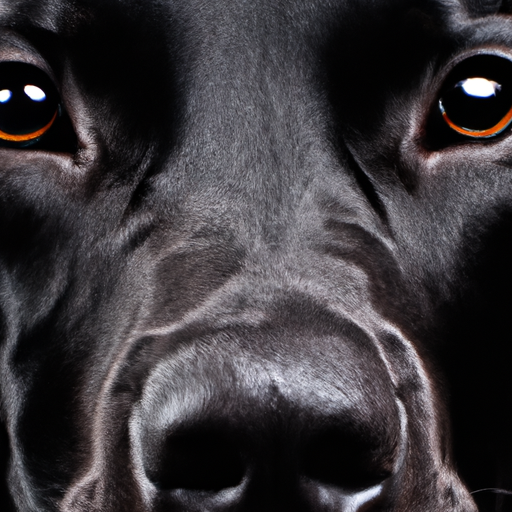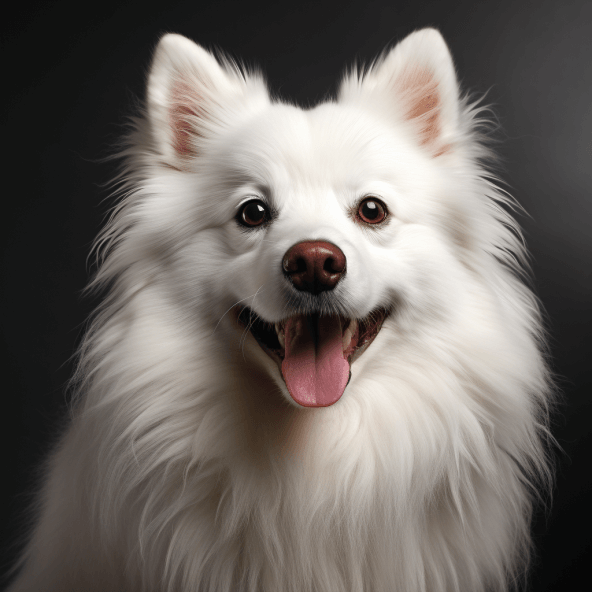Why Do Dogs Have Whiskers?
Venturing into the world of canine biology, it’s fascinating to consider the functions of certain attributes, particularly one as prevalent as whiskers. “Why Do Dogs Have Whiskers” invites you to explore the sensory universe of man’s best friend through a compelling examination of this often overlooked feature. Taking you on a journey through scientific research and behavioral studies, this article shines a light on the importance and purpose of whiskers in dogs. You’ll leave with a deeper appreciation of your furry friends and a newfound understanding of their physical adaptations.
The Anatomy of Dog Whiskers
Dog whiskers, scientifically known as vibrissae, play a significant role in the life of a canine. They’re not merely decorative; they’re functional and quite unique in their structure.
What are whiskers?
Whiskers are stiff, specialized hairs found on your dog’s muzzle, above the eyes, and below the chin. Dogs tend to have between 16 and 20 whiskers on their faces. These long and thick hairs contain nerve endings that send sensory messages to the dog’s brain, providing them with critical perception capabilities.
The structure of dog whiskers
Unlike the regular dog fur, whiskers have a unique structure. They are deeply rooted in the dog’s skin, embedded three times deeper than normal hair. Whiskers are also surrounded by highly sensitive nerve cells that make these unique hairs act like sensory devices to help your dog gather information about the world around them.
Types of whiskers in dogs
In dogs, whiskers come in four types: Mysticetes, found on the upper lip; Inter-Ramal Tufts, located at the lower lip; Genal Whiskers, placed on the sides of the muzzle; and Supraorbital Whiskers, located above the eyes. Each type serves a different purpose in assisting a dog with their sensory interpretation and navigation.
The Science Behind Dog Whiskers
Whiskers on dogs have interesting features that are often fascinating to understand.
Importance of whiskers in the canine species
Canine whiskers are incredibly vital in dogs as they assist them in understanding and interpreting their environments. They offer a form of alternative perception, especially useful in poor visibility or close proximity, where their vision might fail them.
The sensory function of whiskers
Whiskers help dogs lead a seamless life by increasing their sensory perception. They act as kind of radar by picking up vibrations in the air. This enables dogs to sense shapes, sizes, and the position of nearby objects, even in the dark.
Role of whiskers in dog’s behavior and communication
Dogs also use their whiskers to express their emotions, whether they are feeling uneasy, scared, or excited. When dogs feel threatened, they may push their whiskers forward as a warning sign to others.

Functions of Dog Whiskers
Dogs use their whiskers in quite intriguing ways, possibly more than what you might think.
Navigation aid
Whiskers help dogs to navigate their way around, especially in darkness or tight spaces where their vision might be partially or completely obstructed.
Food detection
When it comes to hunting, dogs use their whiskers to detect changes in air currents, aiding them in locating their food or prey.
Communication tool
Observing a dog’s whiskers could clue you in on what they might be feeling. For example, a relaxed dog would usually have its whiskers resting on the side, while an agitated dog might have its whiskers pointed forwards.
Whiskers as a defense mechanism
Whiskers also act as a shield for a dog’s eyes. When an object comes close to a dog’s face, the whiskers stimulate a blink or head shake to protect the eyes from potential harm.
The Importance of Whiskers for Dogs’ Emotion and Mood Perception
Believe it or not, canine whiskers are critical in emotional and mood perception in dogs.
How do whiskers contribute to dogs’ emotional sensing?
Dogs might not have the ability to talk, but they communicate their emotions in so many ways. One way is through the movement and positioning of their whiskers.
Do whiskers help perceive mood changes in other dogs?
Yes, they do. A dog can perceive the mood changes in other dogs by observing their whisker positioning. This helps in preventing conflicts or misunderstandings, especially when meeting unfamiliar dogs.

Do All Dog Breeds Have Whiskers?
Yes, all dogs, irrespective of the breed, have whiskers. That being said, there can be variation in the size, color, and thickness of whiskers.
Comparing whiskers among different dog breeds
Different breeds of dogs may have different whiskers. Some breeds like the Schnauzer are known for their prominent bunches of whiskers, while others, such as the Boxer, have short and barely noticeable whiskers.
Specification of whiskers in certain dog breeds
In some dog breeds, such as the Wirehaired Pointing Griffon, whiskers are part of their breed standard, meaning they are honored and cultivated as an important characteristic.
Should You Trim Your Dog’s Whiskers?
You might think trimming your dog’s whiskers is harmless, but you could be damaging their spatial awareness.
Impact of trimming on the dog’s sensory perception
Trimming or cutting a dog’s whiskers could disorient them, as it drastically reduces their sense of surroundings.
Professional advice on whisker trimming care
Vets and professional dog groomers typically advise against trimming whiskers because of the fundamental role they play in a dog’s life.
Health and Dog Whiskers
A dog’s whiskers could also give you clues about their overall health condition.
Can whiskers indicate a dog’s health condition?
Yes, sometimes changes in a dog’s whiskers, such as thinning or breaking, could be indicative of some underlying health issue.
Noticeable changes in a dog’s whiskers and potential health concerns
If you notice any drastic changes in your dog’s whiskers — like falling off or discoloration — it’s advised to seek a vet’s counsel as it could potentially indicate some health conditions.
What Dogs Do With Their Whiskers
Dog whiskers serve several intriguing purposes in everyday life.
Understanding the movement of dog whiskers
Paying attention to your dog’s whisker movement could give you insights into their mood and emotional state.
How different situations affect whisker behavior
A dog’s whiskers might twitch in excitement when they are playful or straighten out when they are in fear. Hence, observing them could provide a better understanding of a dog’s emotions.
Myths and Facts about Dog Whiskers
There are numerous misconceptions about a dog’s whiskers, but it’s high time to debunk those myths and appreciate these versatile sensory hairs.
Debunking common myths about dog whiskers
One common myth about dog whiskers is that trimming them makes dogs look better. However, trimming or cutting whiskers can interfere with a dog’s ability to navigate their environment and interpret sensory signals.
Interesting facts about canine whiskers
One interesting fact is that canine whiskers connect directly to a dog’s neural networks, enabling them to interpret tactile, or touch, information about their environment.
How to Care for Your Dog’s Whiskers
Even though whiskers might seem low maintenance, they still require some degree of professional attention.
Basic whisker care for dogs
Keeping your dog’s whiskers clean is an essential part of whisker care. Also, while grooming your dog, be careful not to pull or tug on their whiskers.
Signs of whisker distress and how to address it
If you notice any unusual changes or perceived discomfort in your dog’s whiskers, it’s important to consult a vet for professional advice.
You shouldn’t pull a dog’s whiskers
Pulling a dog’s whiskers can cause them pain and potentially lead to skin infections due to the deep roots and sensitive nerve endings in these areas.
Finally, it’s crucial to appreciate your dog’s whiskers for what they are: vital sensory tools. Understanding and caring for these unique hairs can help ensure your canine friend can interpret their world as best and as safely as they can.






